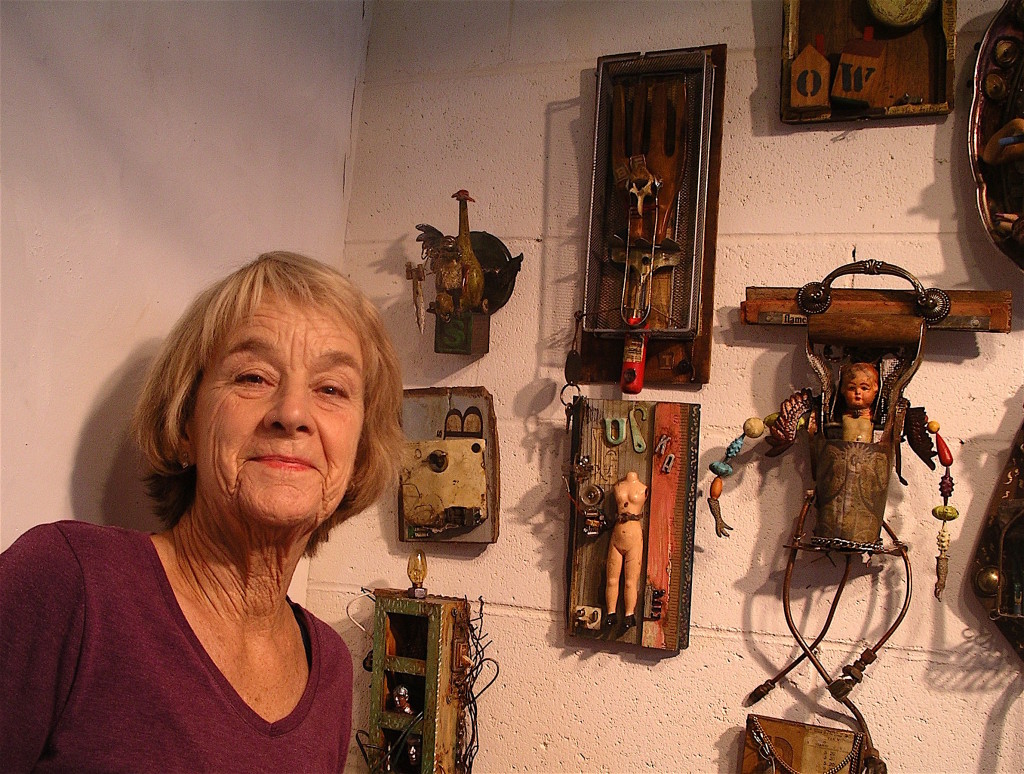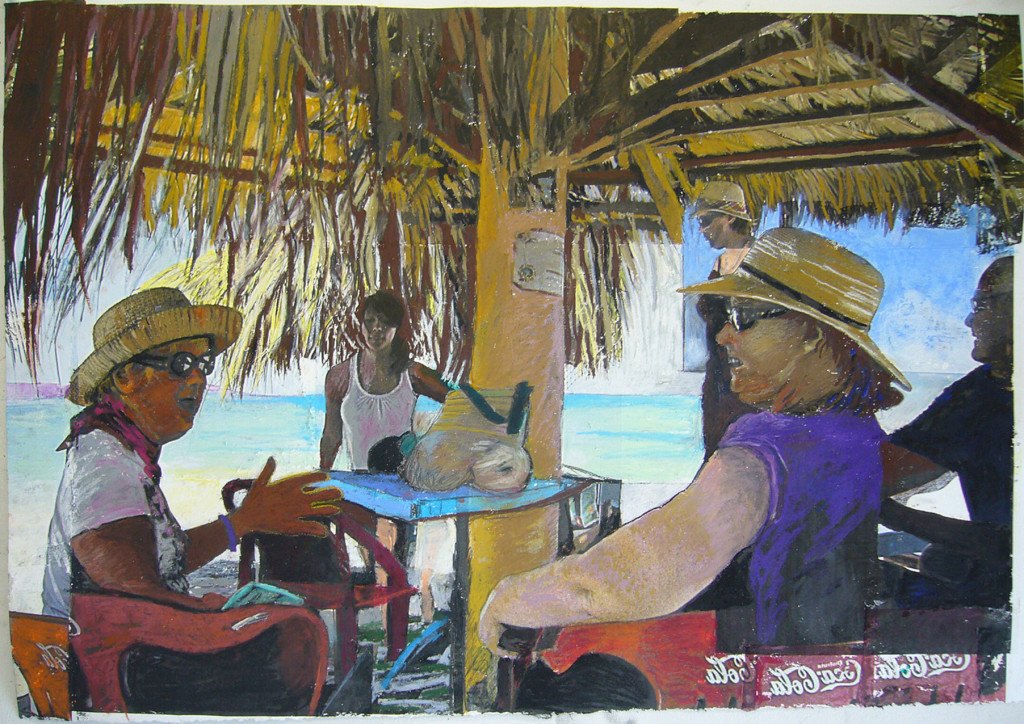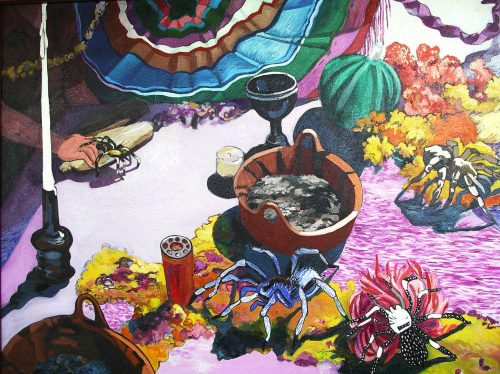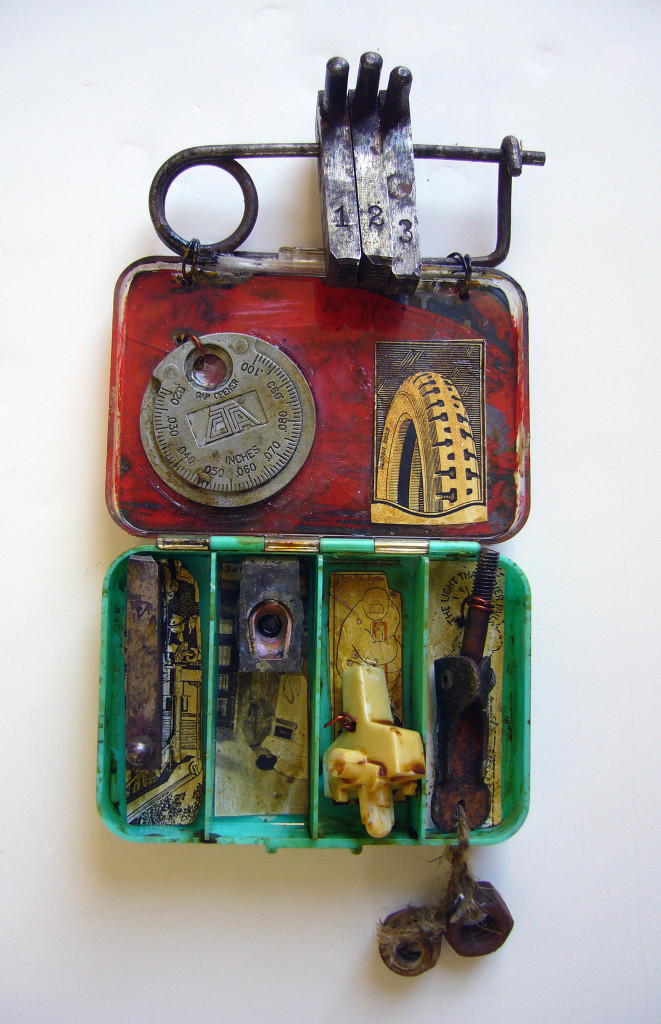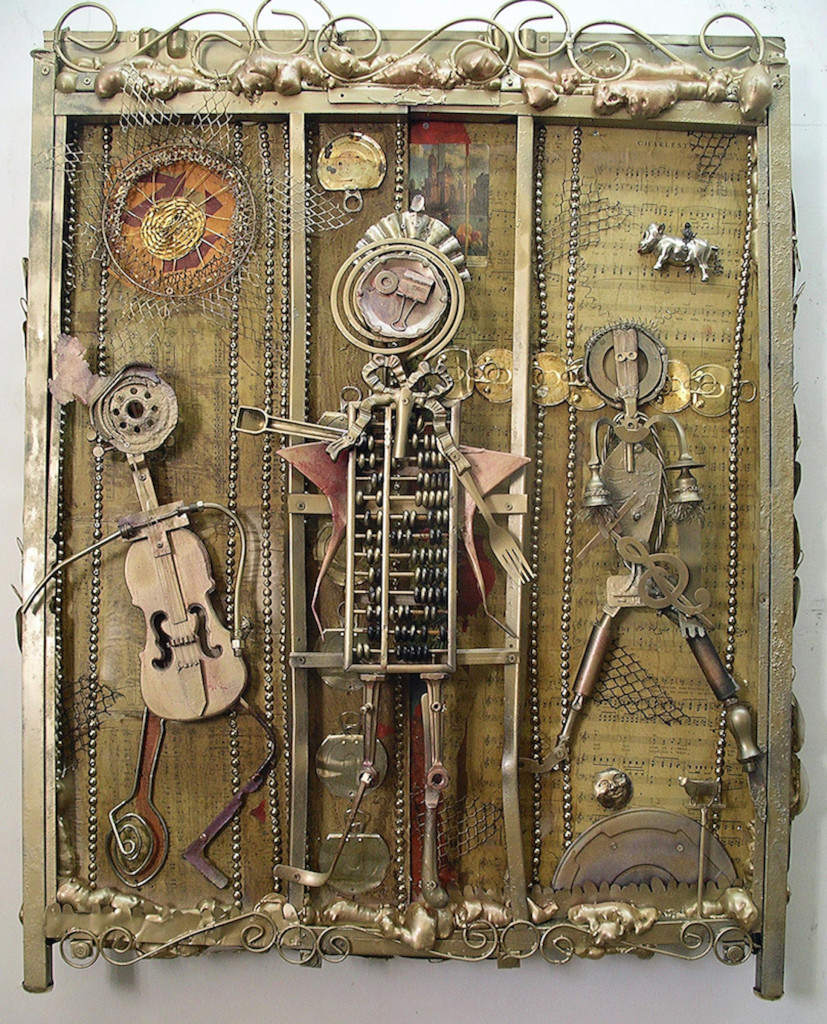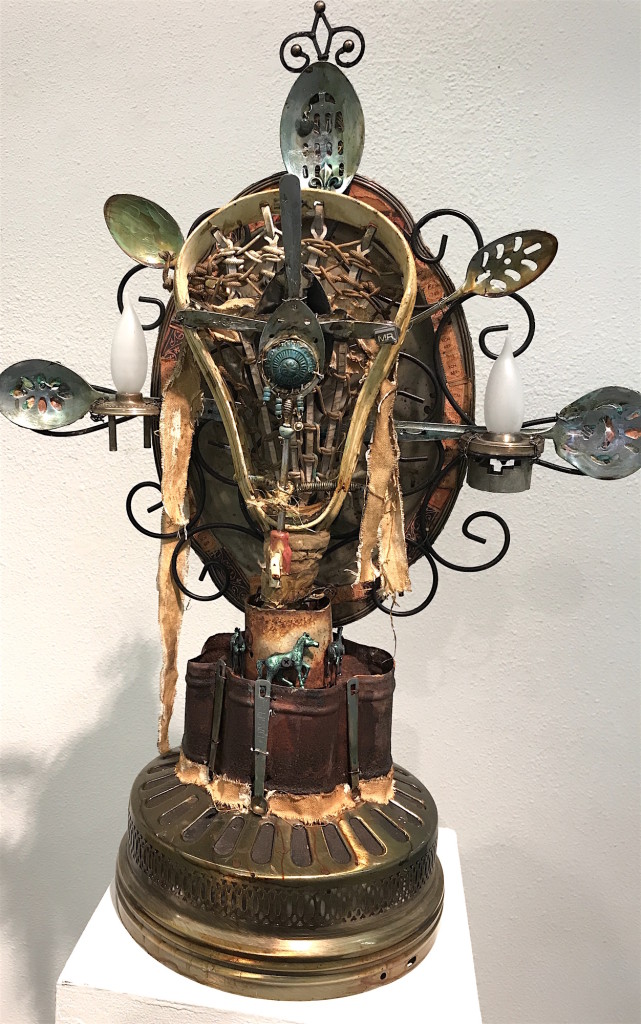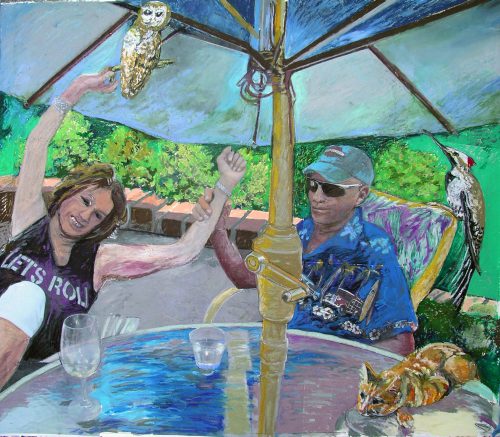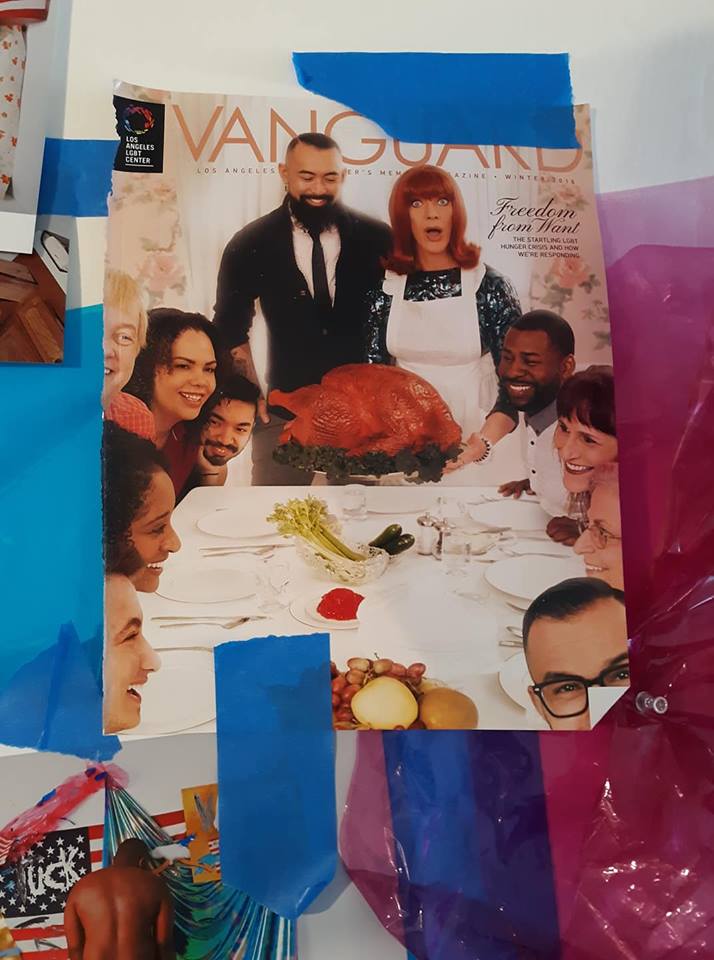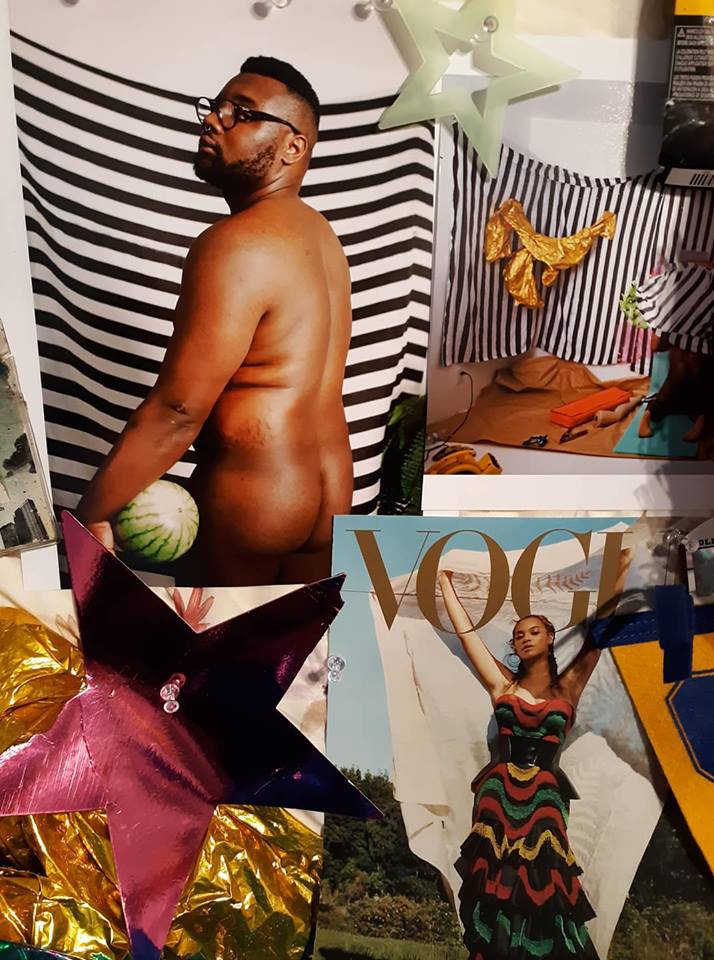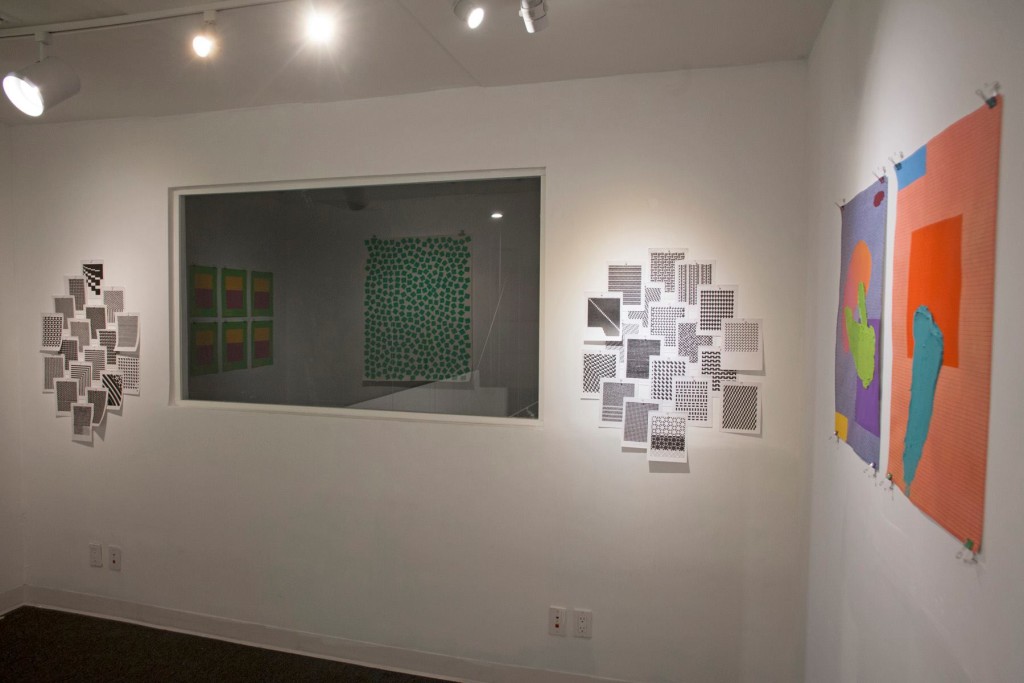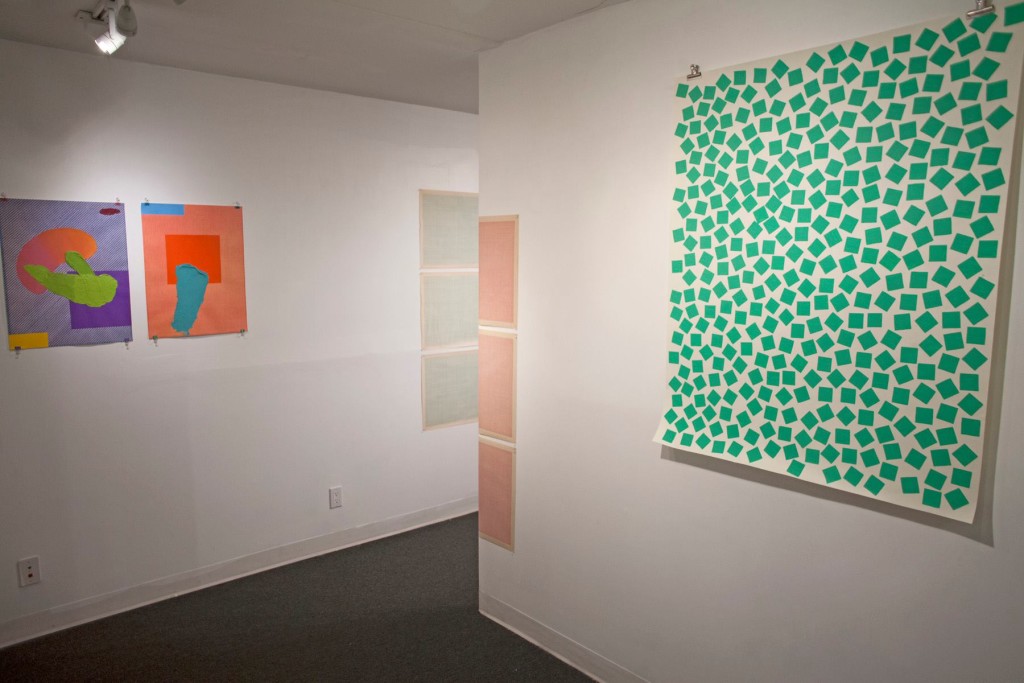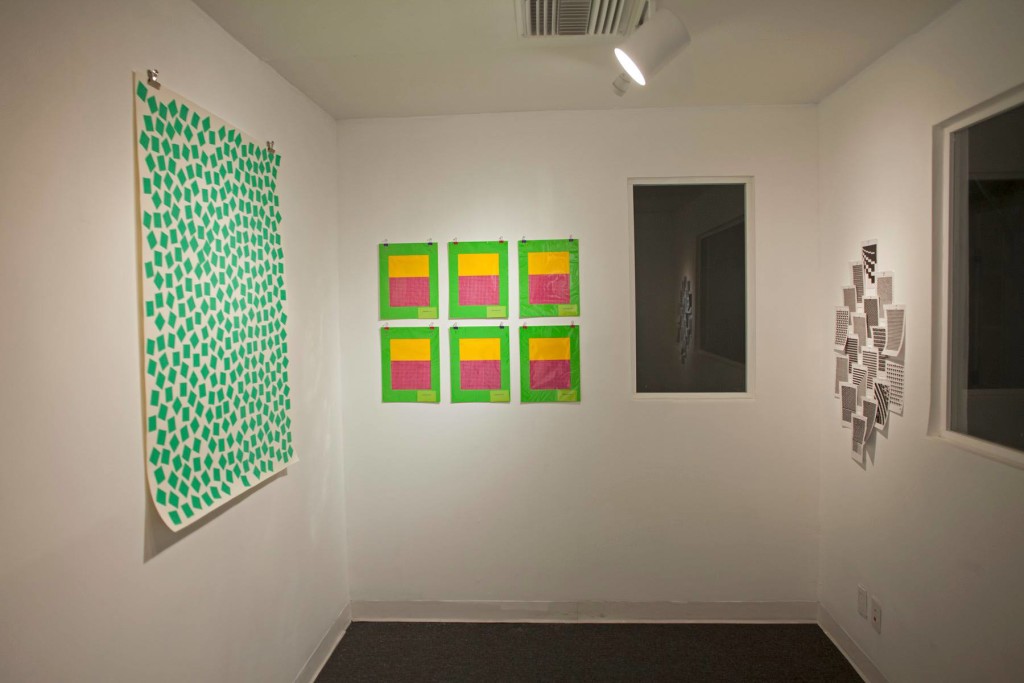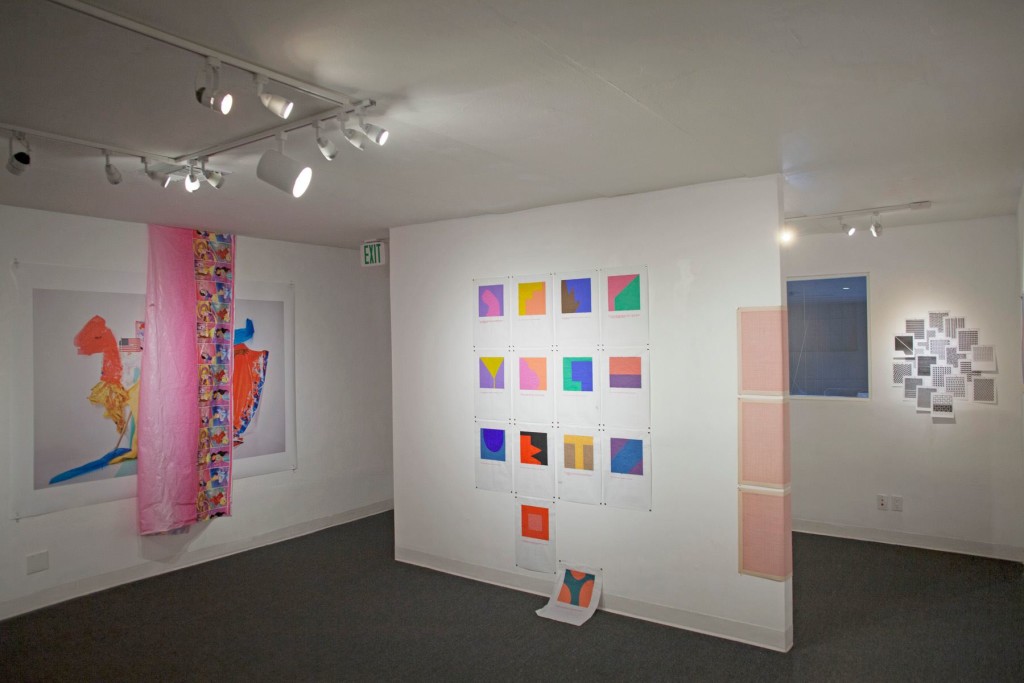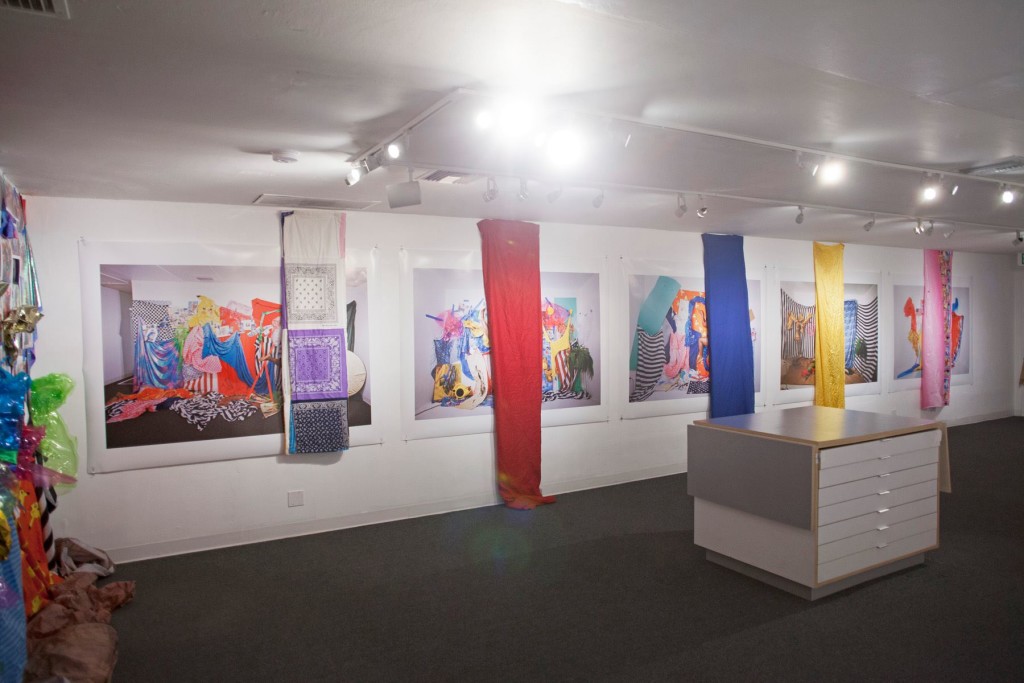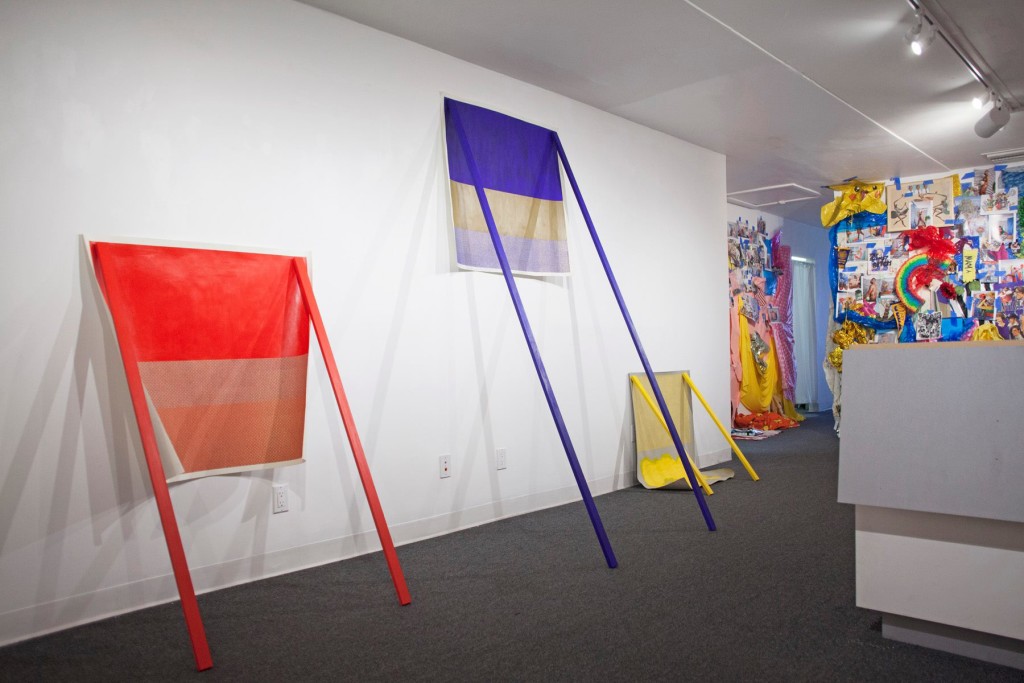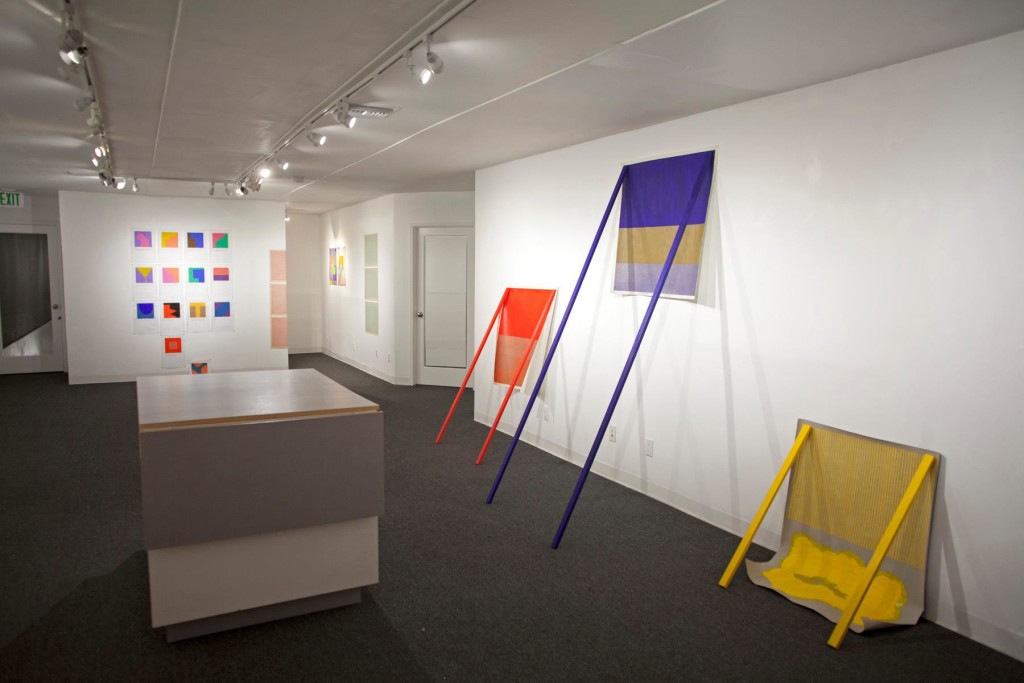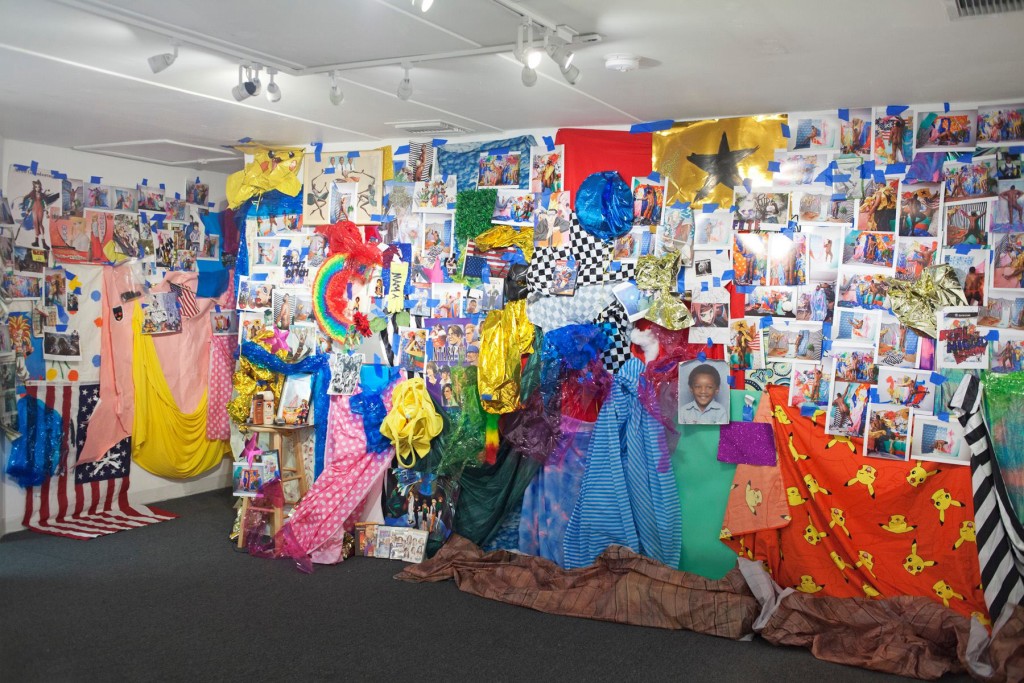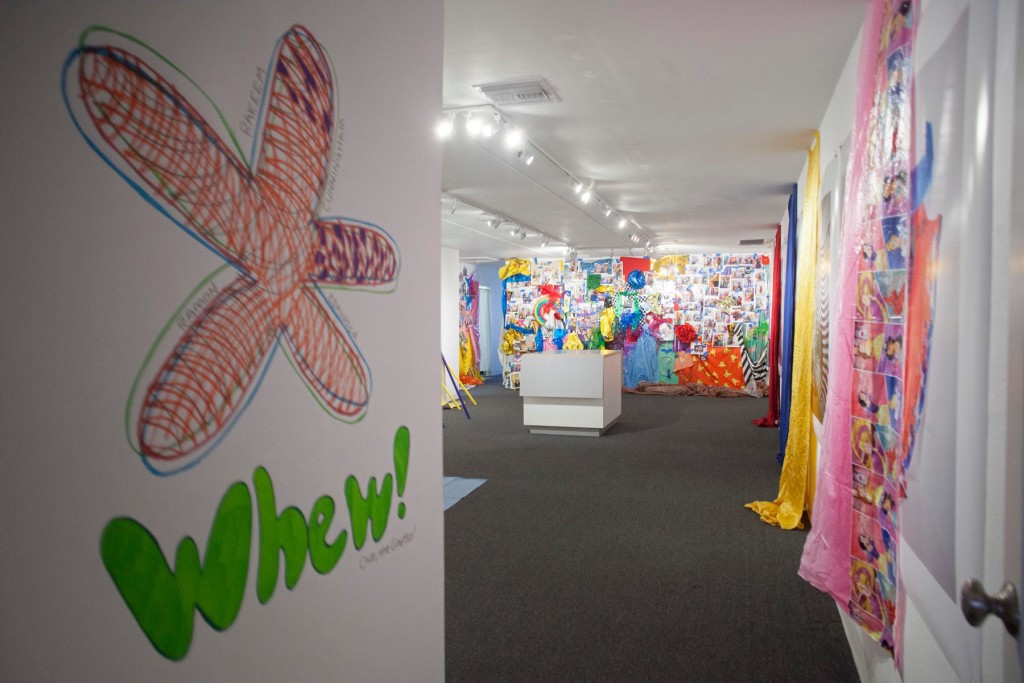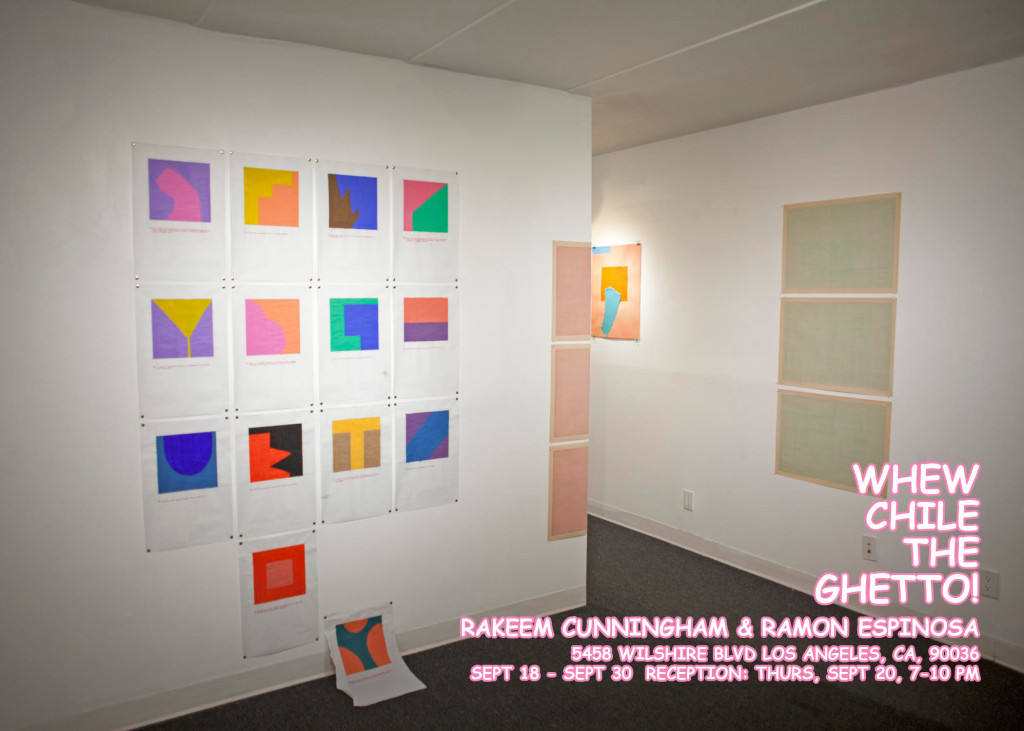Susan J. Osborn says that her “fascination with details, happenings, the wonder of it all, and a deep love for heritage” inspires her art. Working in drawing, painting, assemblage, and mixed media, her varied aesthetic matches her wide-ranging inspiration. “My love of life inspires my work,” she asserts. “And my observation as to what has evolved over fifty years in this world.”
Osborn began her career “s a magical realism painter, “most often reflecting sacred and feminist themes,” she relates. “But I soon found that drawing in oil pastel allowed me to show more energy, gesture, and movement – and retain the vivid colors of my ideas in less time.” The vibrant color she creates with pastels serves her in good stead with many of the images she shapes, which often have a setting or vibe that feels lush and tropical. Her “Beach Chat,” above, is an example of this, the colors radiant, the setting as relaxed as a visual vacation.
According to the artist, “The ‘tropical’ feel in some of my drawings must come from the plants around me. I love to hike, camp, and be outdoors. My work can also be very Southwest at times.” That setting is visible in works such as her painting “Parade of Tarantulas,” below. But no matter what the setting or subject, its the color Osborn uses that rivets the viewer’s attention.
Even as she gravitated from paint to oil pastels as a medium, she taught herself to work in others. Afterall, she relates, she was teaching eleven different art subjects to high school students, and needed to prepare her curriculum quickly.
Still, it wasn’t until the 2007 passing of her father that her interest in working with assemblage began. “I found that assembling the objects from my childhood home, and those memories of my parents, helped me move beyond the grief by giving new life to objects of the past,” she says.
Osborn is nothing if not an artistic chameleon. “I have the urge to work with more oil pastel, drawing over digital photo transfers of Southern California life,” she asserts. “Of course my work in assemblage continues, and I hope to work larger and more abstractly.”
With all her work, she describes it as evolving from “a bit of born ‘craziness’ that is a natural genetic way of seeing. This gets combined with formal training in the arts and years of practice; ideas are constantly swimming in my head from what I feel, see and do.”
When it comes to her work with assemblage, Osborn also finds that the materials themeslves inspire what she does with them. “I go to estate sales, resale shops, garage sales, and find things by the road. If something unusual pops out for me I have to grab it,” she attests. “The object becomes my muse and tells me what objects go with it. I lay things in groups around the studio that eventually create the finished piece.” The result: works that are often whimsical, as she shapes dancing musical figures from what was once dinnerware and wire, or creates what she calls the “Spoon Altar Piece,” above, which has a religious iconography to its design.
Turning again to her work in pastels, she has both figurative and more abstract works, as with her “Blue Agave,” above; the pastel rainbow still easily recognizable as agave leaves, which she colors as if the plant was blessed by the sunrise.
She says she always has three works in progress, no matter what the medium or color palette. Of the latter, she says “I have always felt I was a ‘colorist’,” regardless of some of her more monochromatic works, which she feels may have arisen in part from teaching students black and white photography. As to her assemblages, “I can only attribute these differences to the medium being used,” she explains, saying that in her work, “oil pastel and paint are very vivid, while assemblage is made to look old and rusty.”
New pastel work by Osborn, above, “Under the Umbrella.”
With all of her work, what viewers feel from experiencing it the most important thing to Osborn, describing her hope that they will “giggle and smile when they bring their experiences to viewing the work, and that those experiences will resound with what I have put in it.” She wants that connection with her viewers, so that they “can relate with wonder to the joy, color, and energy of the drawings, or the humor and nostalgic memories of the assemblages.”
Osborn will be exhibiting new works throughout the Southland in coming months. Her Paissanos/USA show will be held this November through July, 2019 at The Consul of Mexico in San Bernadino. “I’m excited my art is on the invitation,” she enthuses. She will also have work in a Paisanos Mexico/U.S. exhibition at the State Center for the Arts in a variety of locations across the border, from Rosarito Beach, where it is presently displayed, to Mexicali next summer.
Osborn will also be exhibiting in Women: Artists and Poets at the Lyceum Theater Gallery in Horton Plaza in San Diego, November through January; as a part of the Artist Portrait Project, in San Diego’s Central Library Art Gallery; followed by Artwalls O’side at O’side bakery in Oceanside. She starts off 2019 with an exhibition at The Front Porch Gallery in Carlsbad, and brings her work to LA with a West Coast Drawing Exhibition at LA Artcore in the early summer.
Don’t miss a chance to see this versatile artist’s rich and delightful work.
Paisanos USA – November 2018 to July 2019
The Consul of Mexico in San Bernadino, 298 N. “D” Street., San Bernardino
Artist reception: November 29th, 6 p.m.
Women: Artists and Poets, November 15, 2018 to January 8, 2019
Lyceum Theater Gallery, Horton Plaza, San Diego
Artist reception: December 1, 7 – 8 p.m. with poetry reading; a second reading takes place December 6th from 7 to 8 p.m.
The Artist Portrait Project: Fifty San Diego Artists, 2006 – 2016, Dec. 15, 2018-March 14, 2019
Central Library Art Gallery, 330 Park Blvd. San Diego
Artist reception: December 15, 12 – 2 p.m.
Artwalls O’side, December 18, 2018 – February 11, 2019
O’side Bakery, 3815 Mission Avenue, Suite 101, Oceanside
Artist reception: December 18, 7:30 – 9 p.m.
She Pushes Boundaries, January 13 – March 2, 2019
Front Porch Gallery, 2903 Carlsbad Blvd. Carlsbad
West Coast Drawing Group Exhibit, June 2019
LAartcore, Little Tokyo and Brewery Annex, Los Angeles


